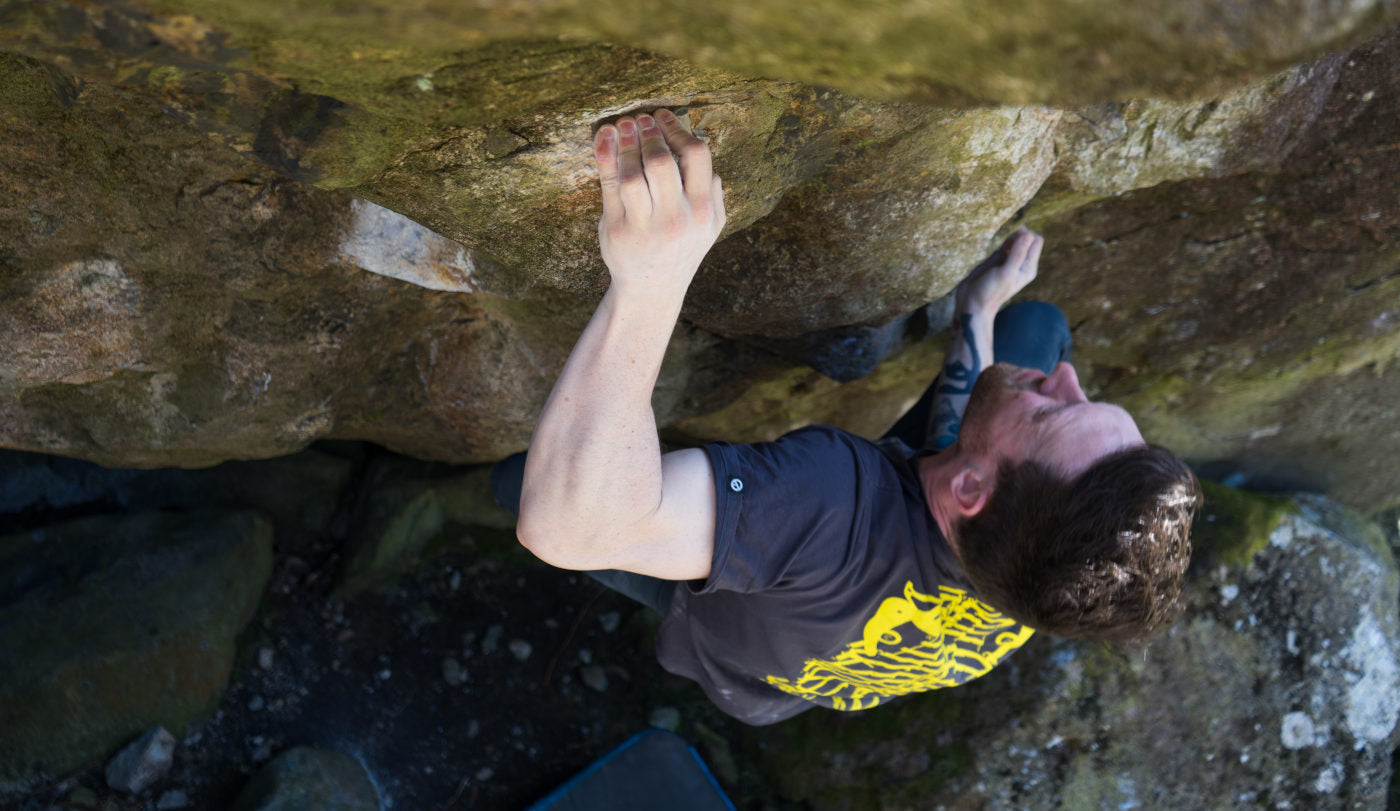By Tom Newberry
When you are on page 1 of the AA UK road atlas and you are parked in the shadow of an old tin mine, you must be in Cornwall. Bosigran, probably the most popular of the Cornish crags, entirely typifies climbing of the area. The huge, heavily featured traditional granite sea-cliff hovers high above the icy blue Atlantic. Jutting out from Porthmoina Cove, Bosigran Ridge’s jagged crest dominates the foreground. It’s a classic Cornish expedition, which is often referred to as a ‘mini Alpine route by the sea’. The ridge's setting, diverse climbing and length mark it out as one of the region's most famous climbs and one not to be missed! While routes this awesome are often only accessible to experts, what makes the ridge such a classic is that it accommodates all levels of climbers offering lots of exit and entry points where less competent climbers can dip in and out. Regardless of your grade, you will find it great fun; do it at night, in the rain, in army boots, carrying a pack… I have even heard accounts of drunken ascents. First climbed by Arthur Andrews in 1902, the route went on to become known as ‘Commando Ridge’ after it became the training ground for commando soldiers during the 1940’s in preparation for wartime cliff assaults during World War Two.  The 200m ridge line takes in 140m of ascent and can take between 15 minutes and 5 hours depending on the style of ascent. After an awkward approach, some may say the crux, the route opens with its hardest and best pitch moving up on steep blocks to gain the jug riddled black wall. Swing up this to gain a deep crack, where curving flake holds lead out of the booming zawn to a bouldery stance on the sunny crest. From here follow your nose for 6 more pitches, sticking to the crest provides the most fun. Although the protection is always at hand (take lots of slings), the exposure, sections of down climbing and the traversing nature along the ridge really do provide the route with its adventurous Alpine feel. Moving across the rough sculpted granite and you begin to feel at home as you come to terms with the exposure. It’s time to take in the situation. There is something magical and hypnotic about watching the swell roll in calmly before exploding vigorously on the cliffs below.
The 200m ridge line takes in 140m of ascent and can take between 15 minutes and 5 hours depending on the style of ascent. After an awkward approach, some may say the crux, the route opens with its hardest and best pitch moving up on steep blocks to gain the jug riddled black wall. Swing up this to gain a deep crack, where curving flake holds lead out of the booming zawn to a bouldery stance on the sunny crest. From here follow your nose for 6 more pitches, sticking to the crest provides the most fun. Although the protection is always at hand (take lots of slings), the exposure, sections of down climbing and the traversing nature along the ridge really do provide the route with its adventurous Alpine feel. Moving across the rough sculpted granite and you begin to feel at home as you come to terms with the exposure. It’s time to take in the situation. There is something magical and hypnotic about watching the swell roll in calmly before exploding vigorously on the cliffs below.
I first came across the legendary Commando Ridge in a conversation with a gnarly Northerner in the French Alps. The Northerner’s utter disgust at the fact that a born and bred Cornishman had never done this iconic and, in his opinion, “best ridge climb in Britain” flushed me with a sense of guilt. Shortly after my return to the UK I was making my way down the tricky descent accompanied by a slim rack and a novice friend wanting to try climbing for the first time. On arrival at the bottom, the first pitch was guarded by a barrage of hostile and unwelcoming waves. My impatience and excitement got the better of me, as I decided we should make a run for it between the waves. My initial elation that we made it to the bottom of the ridge dry soon faded when I realised we had a ten foot scramble and the next set of waves were rapidly rushing in. Hiding behind a small boulder was enough to shelter us from the constant attack until a second well timed dash landed us safe, but a little damp, on the starting ledge. The epic approach was dramatic enough and we had not even begun climbing the ridge. Fortunately the proceeding hours went smoothly and without issue. The first pitch climbs like a dream, proof again that Mother Nature is indeed the world’s greatest route setter. At the first belay a strong westerly wind along with thunderous waves limited communication to sharp tugs, this only added to the alpine experience. Once the ridge was summited we scrambled carefully across the coarse granite placing enough gear to keep it safe but spicy. The exposure is tremendous, and the outing a true adventure. Nearing the end, we untied, climbing together along the optional final pitch which follows the ridge to its conclusion. Immediately after, I could not help but reflect on the Northerners comments “continuously excellent climbing, brilliant rock, exhilarating situations and a stunning location”. I had to agree with the northerner this could well be the very best V.Diff I have done and more than worthy of its legendary status.
If you have enough beans then head back to the main wall for more classics than you can shake a stick at. Little Brown Jug (VS 4b, 4a, 5a) would be my top recommendation; its outrageously positioned final pitch is not a place for those breaking into the VS grade but is nevertheless one of the best pitches of its grade in the UK. Or make an early retreat for a well-earned pint at the cosy Tinner’s Arms in Zennor.















